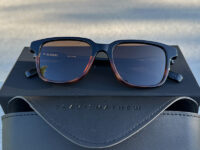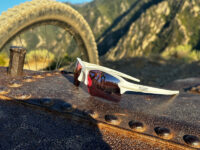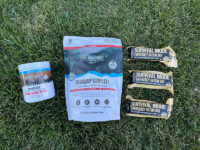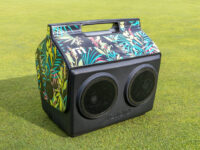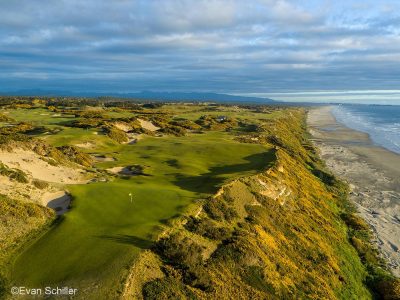Entertaining Sign at Royal Aberdeen Golf Club
Categories: Golf
Tags: Royal Aberdeen • Scotland
I’m in Scotland withdrawal mode, and I may be until I return to that wonderful country. My motivation to play golf here at home is minimal at the moment.
While eating some reheated pizza for lunch today I decided to go through some of my photos from the last Scotland trip. They’re one source of blog posting motivation I can still count on right now. Sure enough I found a fun little nugget to share, a funny sign I shot at Royal Aberdeen Golf Club in the northeast of Scotland. I often find golf signs to be funny, and strange. My collection of funny golf sign photos is getting pretty big. Maybe I should put them all in a book.
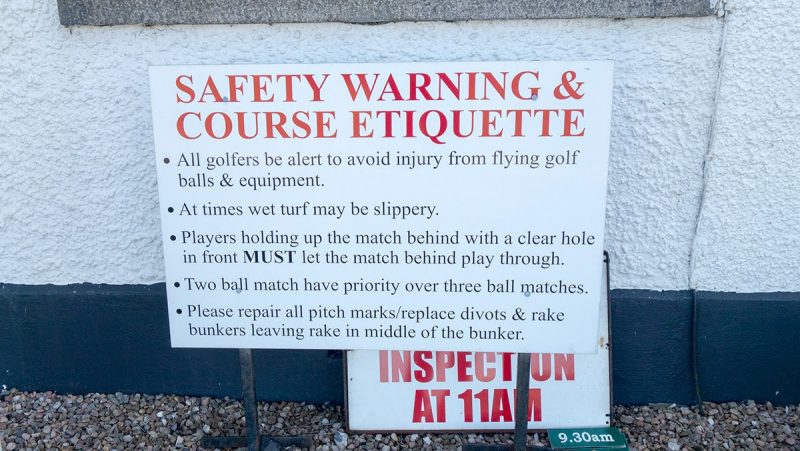
Did this one read to you like it did to me?
“All golfers be alert to avoid injury from flying golf balls & equipment.”
And equipment? What flying equipment other than golf balls? There must be some club throwers there? Maybe its golf bags. Shoes perhaps.
Thanks for the laugh. I loved playing Royal Aberdeen. What a great place. I’ll post a review soon.
Scotland’s Balcomie Links: 7 Golf Balls Within 20 Feet on the Green, All Legit
Categories: Golf
Tags: Balcomie Links • Crail • Scotland
Old Scottish golf courses are pretty quirky and because of those quirky designs and layouts, unusual things can happen. One entertaining example happened on my last trip to Balcomie Links in Crail, Scotland. What a tremendous course Balcomie Links is. I’ll feature the course more later.
I was the last of my group to reach the (I think) 11th green. The 11th is known as “Lang Whang,” and the hole got its name long before the Anthony Wiener days. Up the hill on this par-5 I wasn’t sure if I’d reached the green or not, or where my ball even was. When I reached the green, my friends (The Lads) and some other gentlemen were on the green laughing.
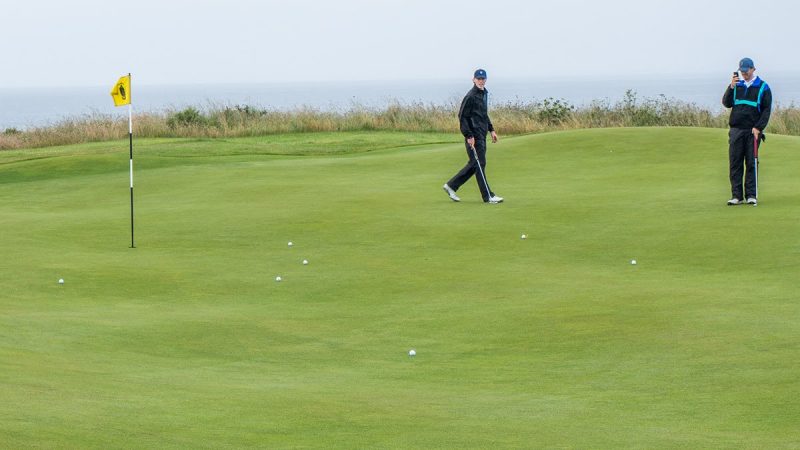
On the green, not more than 20 feet apart, were seven golf balls. This hole’s green is shared with I believe the par-4 8th. Both groups approaching hit the same area. I was happy to find that my ball was one of them.
It’s not often you see seven balls on a green so close together in a real round of golf, and none of them are provisionals, mulligans, or practice shots.
FORE!
Senior Moments at My First Senior Tournament
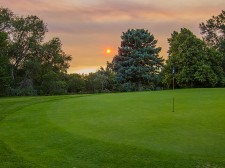
Bonneville 12th Green
I get to the range and start pumping balls over the fence at the back of the range. I’m killing it. I get to #1 tee and hook the ^&$@ out of my tee shot. Somehow I make birdie anyway. On the 2nd hole I hook the @#$%* out of it again and hit an OB fence, bouncing back in play 60 yards. I still make a triple-bogey 7. I haven’t made a triple in a tournament since, well maybe 3-4 years ago.
Later in the round I’m putting for eagle on the par-5 5th and I feel an itch on my shoulder. I itch it and feel a bump under my shirt. It’s a wasp. He stings me. I try to get him out of my shirt and he stings me again. I rip my Dunning shirt off and run around while my players watch me wondering WTF I’m doing. I make birdie.
The rest of the round I had a hard time hitting any kind of drive. I hit such a horrid drive on the par-4 7th that I put a sky mark in my driver. Never done that before, ever. It went about 200 feet straight up and forward about 30 yards. When the ball was at its apex, a guy in my group said, “oh my God.” All I could do was laugh.
I shoot 79 and can barely keep a driver in play the whole round. Strange because my driving has been fantastic all year. I’ll chalk it up to being a senior and try to forget about it.
Thanks for the Award, But
Categories: Boneheads • Golf
Tags: Golf Blog • Golf Blogs
 I’ve gotten a couple of these nice emails in the last couple of weeks. Yes HOG has won yet another award. My digital shelf is full of them. Glad it’s just digital. This one quoted below is very typical. I receive an unsolicited email from some person and site I’ve never heard of who has this top 10 list or top something list, and HOG is on it. I’m supposed to get all excited about it and post my award, and of course the LINK BACK to the list. That’s the key right there, the link back. This is just link trolling. I’m not a fan of links trolls, so to speak.
I’ve gotten a couple of these nice emails in the last couple of weeks. Yes HOG has won yet another award. My digital shelf is full of them. Glad it’s just digital. This one quoted below is very typical. I receive an unsolicited email from some person and site I’ve never heard of who has this top 10 list or top something list, and HOG is on it. I’m supposed to get all excited about it and post my award, and of course the LINK BACK to the list. That’s the key right there, the link back. This is just link trolling. I’m not a fan of links trolls, so to speak.
Hi Hooked On Golf Team,
My name is Anuj Agarwal. I’m Founder of Feedspot.
I would like to personally congratulate you as your blog Hooked On Golf Blog has been selected by our panelist as one of the Top 100 Golf Blogs on the web.
[link removed]
I personally give you a high-five and want to thank you for your contribution to this world. This is the most comprehensive list of Top 100 Golf Blog on the internet and I’m honored to have you as part of this!
Also, you have the honor of displaying the following badge on your blog. Use the below code to display this badge proudly on your blog.
[see image]
Out of curiosity I decided to look at the list. Between popups asking me for my email address I was thrilled, yeah right, to find out that I was in 31st place! I had no idea there were even 31 golf blogs in existence. A deeper look at the list had me laughing. Let’s look at a few:
#1 on the list is Golf Channel’s Golf Central Blog. To me this does not qualify as this is a major golf media outlet. Same with #3, ESPN.
#3 is Reddit? Really? That’s not a blog.
#5 is the “Rules of Golf” blog? I’ve never heard of it. They have a whopping zero facebook followers and 635 twitter followers. Impressive. And their Alexa Ranking (more on this later) is 743,000.
Golfsmith is in there. Not a blog.
My Golf Spy is in there. Not a blog. It’s a forum.
GolfNow.com is in there. Not a blog. It’s a discount tee time platform.
“Turf Diseases” comes in at #9. Yes, the widely popular blog Turf Diseases. LOL.
The Golf Channel’s YouTube channel came in at #17 with an Alexa ranking of 2. Well, that’s YouTube’s Alexa ranking but who’s counting?
Other companies in there who simply sell products but are being called blogs include Odyssey Golf, Your Golf Travel, Ben Hogan Golf Company, Northern California Golf Association, Hyde Park Golf and Country Club Grounds Department, Shipsticks…
Alexa Ranking
Funny thing is that one of their criteria is Alexa ranking. Sounds great except the only computers that have Alexa on them are ones in which the user has specifically installed Alexa, and it only works on Internet Explorer, which now has roughly 1/4 of the browser market. The only reason IE has any market share at all is because Windows machines come with IE as the default browser.
Part of the criteria other than the faulty Alexa one is Twitter and Facebook followers. Well I have over 8000 followers, but they show HOG has having ZERO.
Conclusion
If you take away all the golf club companies, travel companies, sports entities like Golf Channel and filter out the list to true golf bloggers and filter out all the noise, HOG moves up to #1. Probably a tie with Golf Blogger really. Neck and neck.
Tweet of the Month
Categories: Golf
Tags: Balcomie Links • Crail • Scotland
Tony @TheGolfSpace & @HOGGOLFBLOG contemplates #golf on legendary links @CrailGolf #standrews with @caddiegolftours pic.twitter.com/K5T9sTQMLs
— John Boyne (@caddiegolftours) August 27, 2016
Thanks to John Boyne and Caddie Golf Tours for the great tweet, the great friendship, and the great memories.
« Previous 1 … 117 118 119 120 121 … 1,165 Next »

